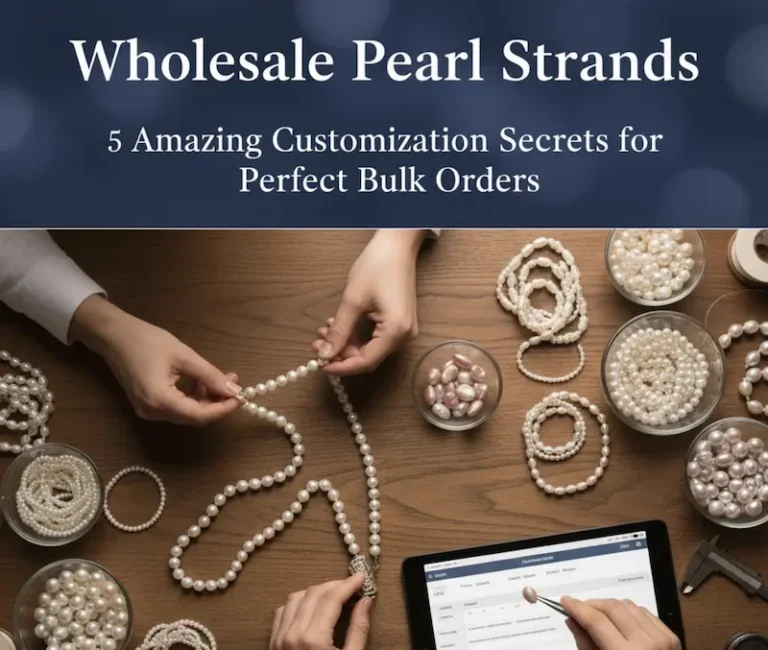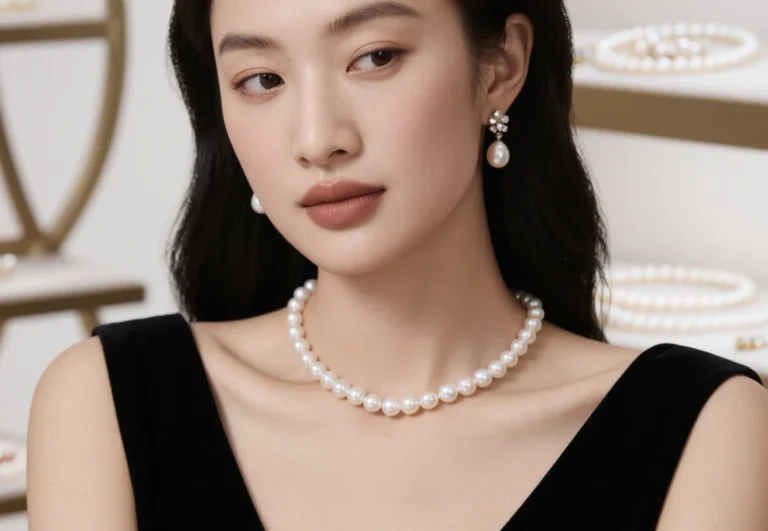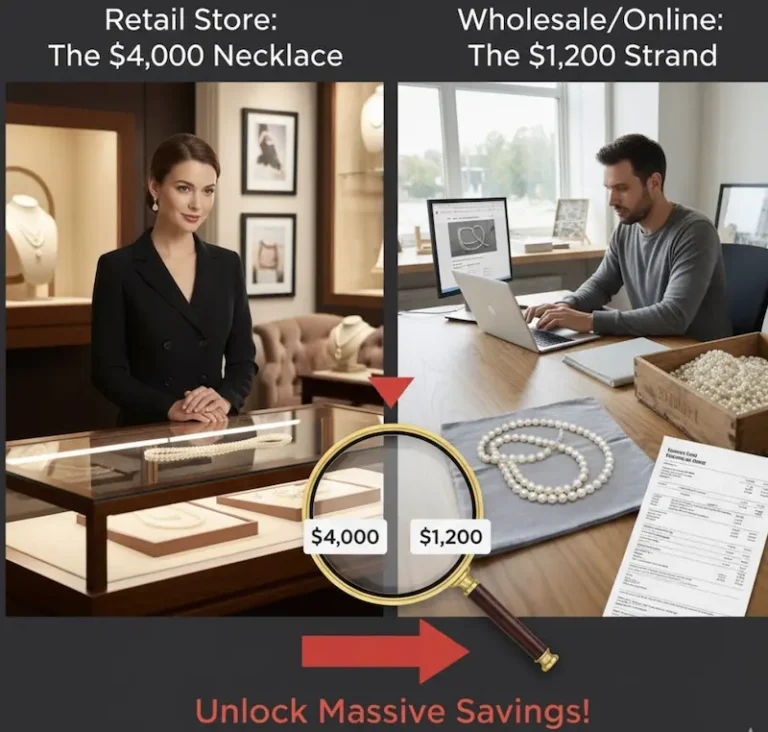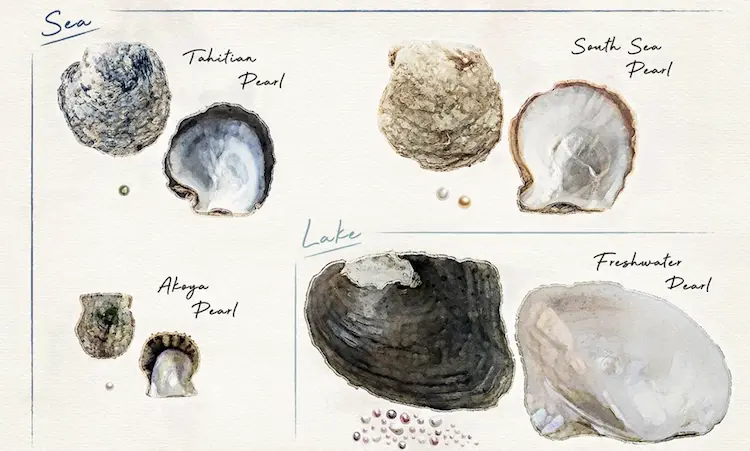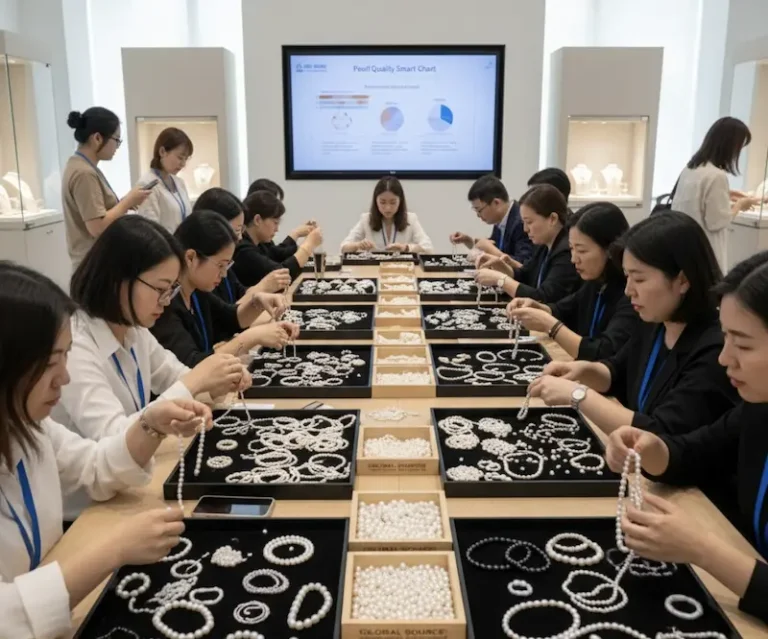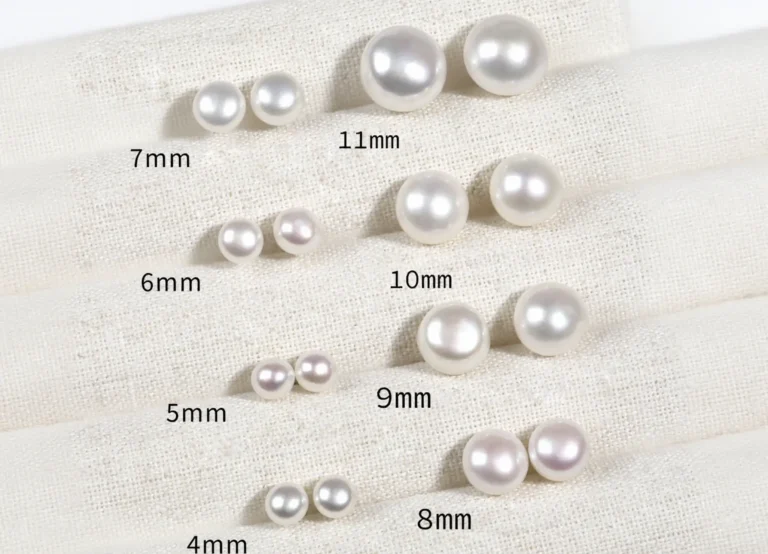Knowing how pearls are graded can help you make a smart purchase and not pay too much. Whether you’re new to buying pearls or have been collecting them for a while, understanding how to grade them will help you find quality and value in these beautiful gems. This guide will tell you everything you need to know about how to judge pearls, including the different grading systems and the specific things that make a pearl worth a lot of money.
What Makes Pearl Grading So Important?
It’s not just technical stuff when you grade pearls; it’s how you know what you’re buying. Pearls are harder to grade than diamonds because they are natural and don’t follow strict rules. Every pearl is different, and its surface, shine, and how it was made tell a different story. Understanding how pearls are graded is key to making an informed purchase.
If you understand pearl grading, you’ll be able to:
- Compare different pearls fairly.
- Know if you’re getting a good price.
- Spot any problems before you buy.
- Really appreciate how much work goes into growing high-quality pearls.
Grading pearls means looking at many things at once to get a complete idea of how good each pearl is. This way, buyers can be sure they’re getting a fair assessment of what they’re paying for.
The Two Major Pearl Grading Systems You Need to Know
There are two main ways how pearls are graded that you should know about: the AAAAA-A system and the Tahitian system. The AAAAA-A system is usually used for freshwater and Akoya pearls, and it ranks them from best to worst. The Tahitian system looks at different things like the pearl’s shape, surface, shine, and color. Knowing these systems will help you make smart choices when buying pearls.Just make sure you know what system the seller is using to rate the quality of the pearl. You will feel good about your purchase if you take the time to learn about the standards of each system.
The AAAAA-A System: Most Common for Freshwater and Akoya Pearls
The AAAAA-A grading system is often used for freshwater and Akoya pearls, but it can really be used for any kind of pearl. This system evaluates pearls using letter grades from AAAAA (highest quality) down to A (acceptable quality). The current mainstream grading uses A, AA, AAA, AAAA, and AAAAA grades.
Here’s how the modern AAAAA-A system breaks down:
| Grade | Quality Level | Surface Blemishes | Luster Quality | Shape Requirements |
|---|---|---|---|---|
| AAAAA | Exceptional | 0-2% surface blemishes | Outstanding, deep mirror-like | Perfect round |
| AAAA | Premium Plus | 2-5% surface blemishes | Excellent, mirror-like | Near-perfect round |
| AAA | Premium | 5-10% surface blemishes | Very good to excellent | Good round to near-round |
| AA | High | 10-25% surface blemishes | Good to very good | Mostly round |
| A | Acceptable | 25%+ surface blemishes | Fair to good | Various shapes acceptable |
The Tahitian (A-D) System: Preferred for South Sea and Tahitian Pearls
The Tahitian system uses A, B, C, and D to rate Tahitian pearls. It mainly focuses on how clean the surface is, with Grade A being the best and Grade D having lots of flaws.
Here is a list:
- Grade A: The surface is almost perfect and has a great shine.
- Grade B: There are small flaws on less than 10% of the surface.
- Grade C: There are noticeable flaws on 10–30% of the surface.
- Grade D: There are a lot of flaws on more than 30% of the surface.
The 7 Critical Factors That Determine How Pearls Are Graded
1. Luster: The Heart of Pearl Beauty
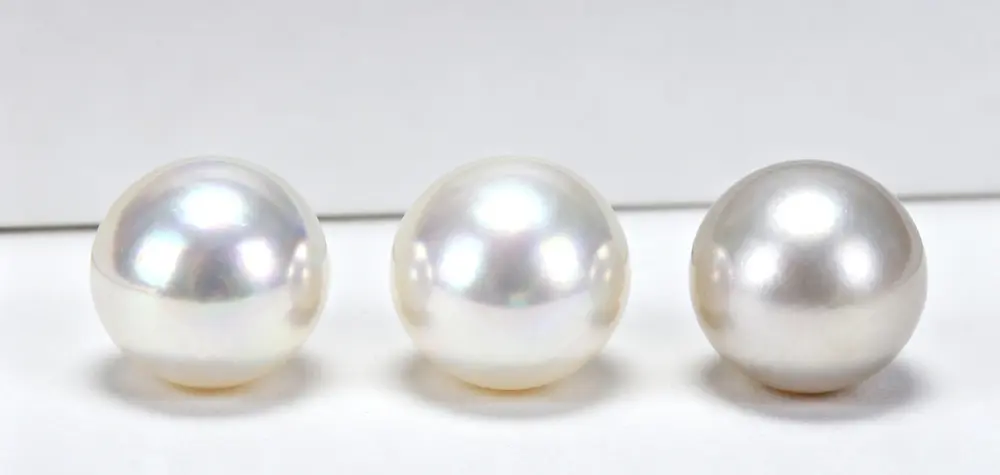
Luster is often considered the most important factor in how pearls are graded. Luster and nacre quality are closely related. If the nucleus is visible under the nacre, or if the pearl has a dull, chalky appearance, you can assume that the nacre is thin.
High-quality pearls should reflect light sharply, creating mirror-like reflections where you can see clear images. When examining luster, look for:
- Sharp, crisp reflections rather than blurry images
- Bright, almost metallic shine
- Deep, saturated light reflection that seems to come from within
Professional graders often use controlled lighting environments to assess luster consistently. The best pearls will show your reflection clearly enough that you can see facial features and details.
2. Surface Quality: Evaluating Nature’s Imperfections
When it comes to how pearls are graded, the surface quality of a pearl is very important because it impacts how pretty it looks and how long it will last. Both natural and cultured pearls get surface marks as they grow. The number and size of these marks, as well as how visible they are, determine the grade.
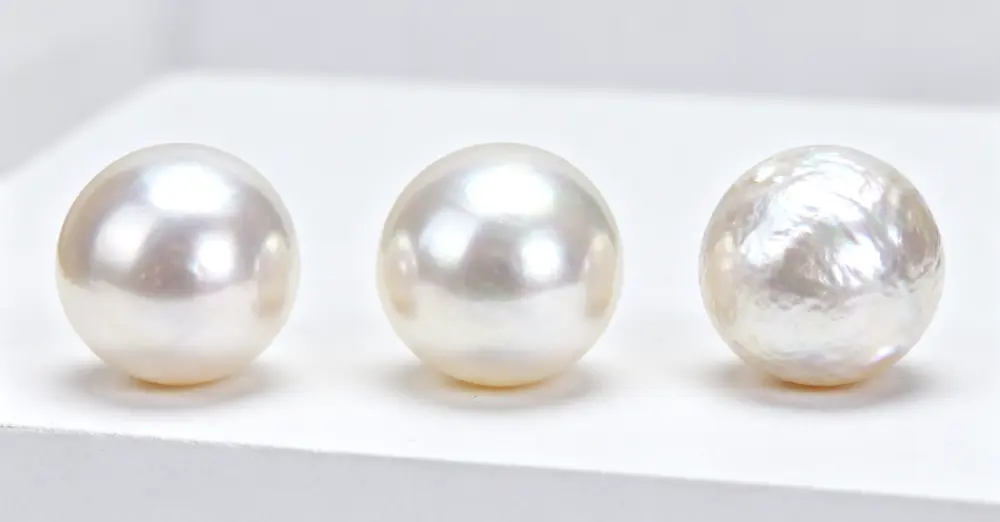
Here are some things you might find on the surface of a pearl:
- Bumps and ridges that happen when nacre (the stuff that makes pearls) isn’t even.
- Little holes or dents.
- Lines or wrinkles that show how the pearl grew.
- A little bit of color difference or small spots
If a pearl has only minor flaws and 60% of its surface is clean, it’s considered acceptable quality by many grading standards. However, for the really top-notch, premium pearls, you’re looking for a much higher percentage of flawless surface.
3. Shape: From Perfect Rounds to Unique Baroque Forms
Shape plays a significant role in how pearls are graded, though preferences can be subjective. True round-shaped Freshwater pearls remain a tiny percentage of each yearly harvest—less than 3%—and are a major factor in determining a pearl’s overall quality grade.
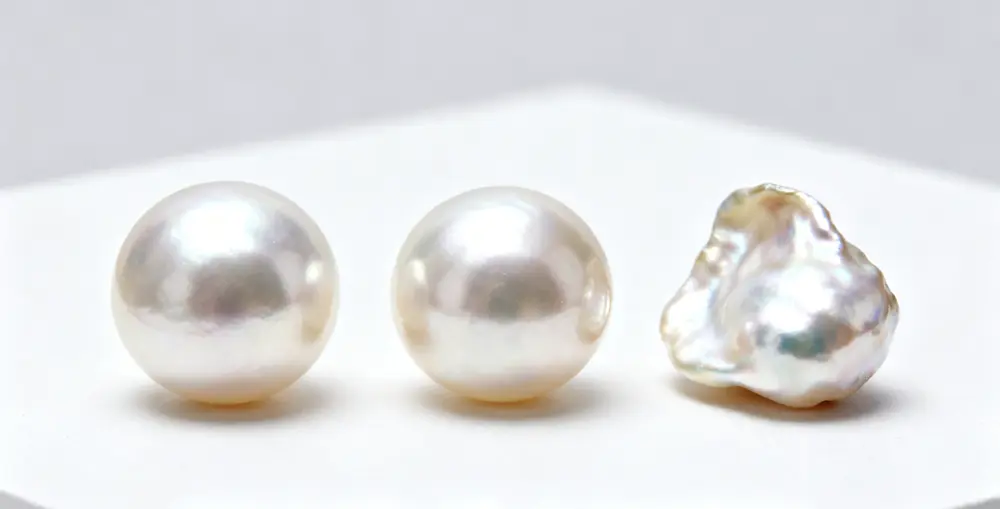
The shape categories include:
- Round: Perfectly spherical (most valuable)
- Near-round: Slight variations from perfect spherical
- Oval: Elongated with rounded ends
- Button: Flattened on one side
- Drop: Teardrop or pear-shaped
- Baroque: Irregular, unique shapes
Working with a reputable Pearl Manufacturer ensures access to properly shape-graded pearls across all categories.
4. Size: Bigger Usually Means More Valuable
Generally speaking, bigger pearls are harder to find and therefore worth more, assuming everything else is equal. When it comes to how pearls are graded, we measure a pearl’s size in millimeters, taking the diameter at its widest point.
Size is a big deal when grading pearls because:
- It takes longer to grow a larger pearl.
- The longer the pearl is growing, the greater the chance it doesn’t survive.
- People usually want bigger pearls.
- Larger pearls really show off their shine (luster) and color.
Here’s a breakdown of the typical size ranges you’ll see for different types of pearls:
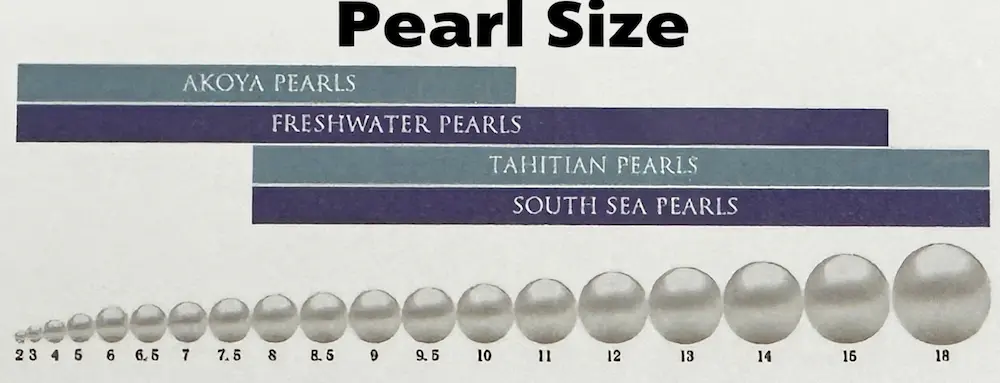
- Akoya: 2mm-11mm (most often 6mm-8mm)
- Freshwater: 2mm-15mm and up
- Tahitian: 8mm-18mm and up
- South Sea: 9mm-20mm and up
5. Nacre Thickness: The Foundation of Pearl Quality
When it comes to how pearls are graded, especially cultured ones, how thick the nacre (that shimmery coating) is really matters. Generally, the thicker the nacre, the better the pearl’s shine and the longer it will last.
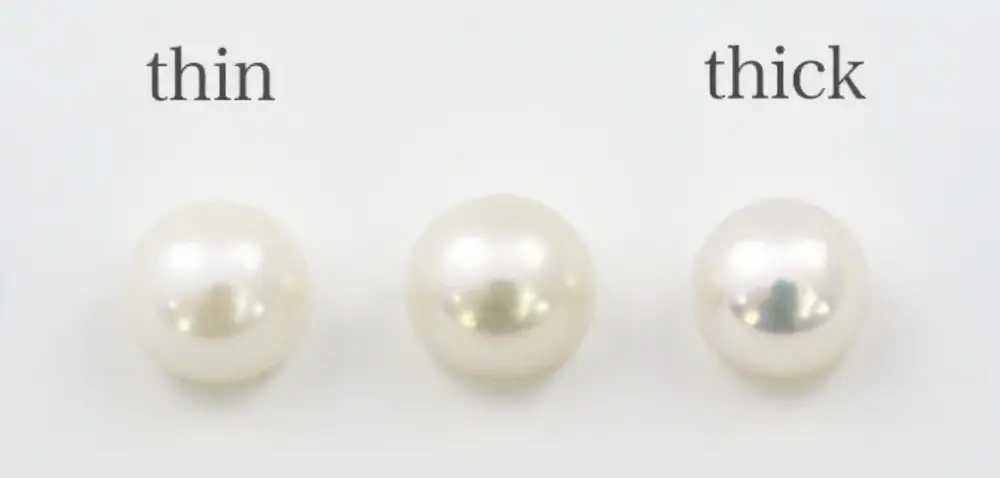
When you look at nacre, this is what matters:
- How thick it is: Experts usually just look at it.
- How good the layers are: Are they even and thick?
- How it affects the shine: Thicker nacre usually means a better shine.
- How tough it is: Thin nacre can chip or wear away more easily.
The thickness of nacre in saltwater cultured pearls is directly related to how long they were grown and how good they are overall. When it comes to long-term durability, good wholesale pearls always put nacre thickness first.
6. Color: From Classic White to Exotic Black
Color evaluation in pearl grading encompasses several components:
- Body color: The pearl’s dominant color
- Overtone: Secondary colors that appear over the body color
- Orient: Iridescent rainbow colors that shift with light angles
Variations in pearl body color, overtones and color saturation levels (with as many as 80 “official” variations!) mean that the value factors for Color need to be evaluated individually.
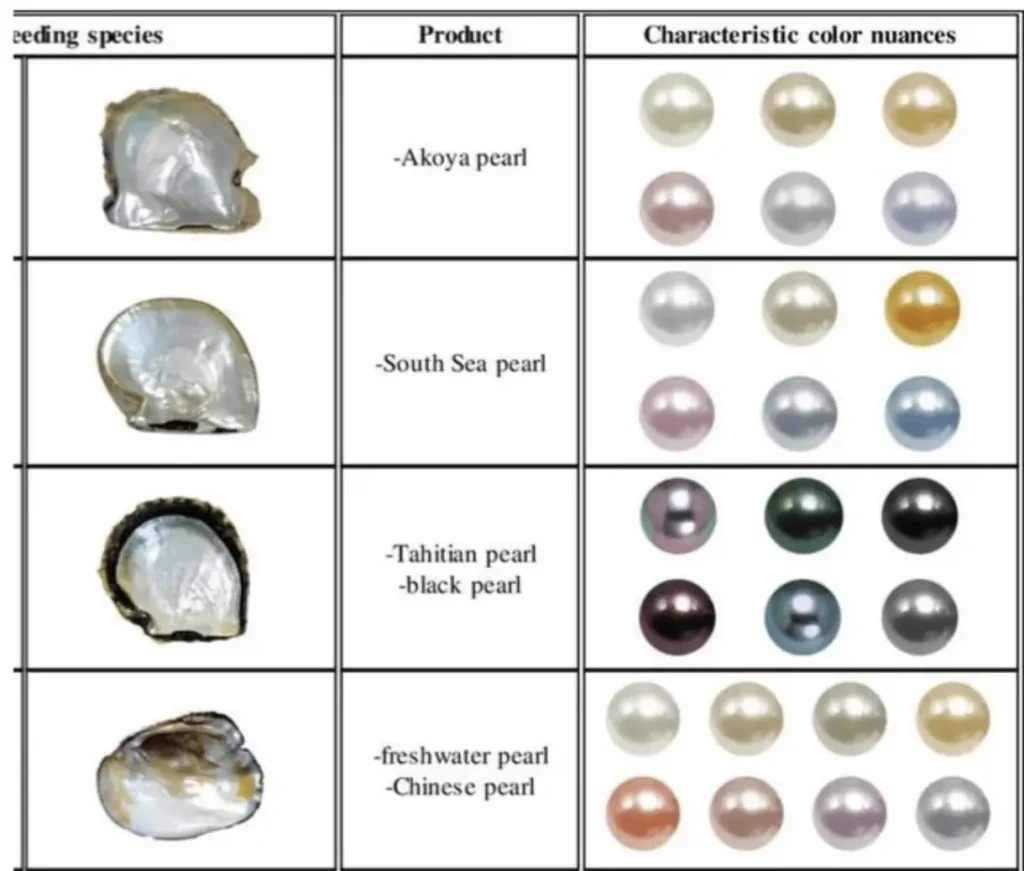
Color preferences vary by market and personal taste, but consistency and saturation typically increase value. When it comes to how pearls are graded, natural color pearls generally command higher prices than treated or dyed specimens.
7. Matching: Harmony in Pearl Jewelry
When it comes to how pearls are graded, especially for jewelry with more than one pearl, matching is very important. There should be virtually no difference between each pearl in a necklace, bracelet, or matched set.
When it comes to grading jewelry with more than one pearl, matching is very important. There should be virtually no difference between each pearl in a necklace, bracelet or matched set.
Professional matching evaluates:
- Size consistency across all pearls
- Color uniformity throughout the piece
- Luster quality matching between pearls
- Shape consistency where appropriate
- Surface quality harmony
Premium pearl strands match all of these factors perfectly, making jewelry pieces that look great and are worth a lot of money.
Professional Pearl Grading Standards and Certifications
GIA Pearl Grading: The Gold Standard
The GIA uses a comprehensive standard it developed over a 60-year period of ground-breaking research on pearls, called The GIA 7 Pearl Value Factors™ (Size, Shape, Color, Luster, Surface, Nacre, and Matching).
The Gemological Institute of America gives detailed reports on pearls that include:
- Weight and measurements in detail
- Full assessments of quality
- Finding out where something came from when possible
- Disclosure of treatment
- Photographic records
Industry-Specific Grading Standards
There are often different ways to grade different types of pearls:
Hanadama Akoya Pearls: These are the best of the best from Japan, and they have to meet some very strict standards:
- They need an X-ray to prove the nacre is thick enough.
- A lab has to officially measure their luster (shine).
- Their surface has to be really, really good.
- And an independent organization has to verify everything.
Tahitian Pearl Certification: The government of French Polynesia has rules for these pearls, including:
- Official export papers.
- Verification of the pearl’s quality grade.
- Proof that they really came from there.
- They have to tell you if the pearl has been treated in any way.
Common Pearl Grading Mistakes to Avoid
Understanding how pearls are graded helps you avoid these frequent errors:
- Overemphasizing Single Factors: Many buyers focus exclusively on size or shape while ignoring luster quality. Remember that pearl value comes from the combination of all grading factors working together.
- Ignoring Nacre Quality: Thin nacre might look acceptable initially but can lead to durability problems over time. Always verify nacre thickness, especially in cultured pearls.
- Misunderstanding Color Grading: Just because a pearl has a natural color difference doesn’t mean it’s not a good pearl. Some of the most valuable and rare pearls in the world have colors that are one-of-a-kind and natural.
- Assuming Higher Grades Always Mean Better Value: Depending on what you’re looking for and how much you want to spend, a pearl that is rated a little lower might be a better deal for you. Just think about the things that are most important for what you want to do with it.
How to Evaluate Pearl Grading Yourself
Visual Inspection Techniques: When examining how pearls are graded, use these professional techniques:
- Luster Test: Hold the pearl under a bright light and look for sharp, clear reflections
- Surface Inspection: Examine under good lighting, rotating the pearl to see all surfaces
- Shape Assessment: Roll the pearl on a flat surface to check roundness
- Color Evaluation: View under natural daylight when possible
Tools for Pearl Evaluation: Professional graders use specialized equipment, but you can make informed assessments with:
- Good quality LED lighting
- 10x magnification loupe
- Pearl gauge for size measurement
- Color comparison charts
The Future of Pearl Grading Technology
Because of new technology, pearl grading is always changing. Here are some of the most recent news:
- Digital imaging systems for color evaluation that is always the same
- Laser tools for accurate measuring
- Spectral analysis to find out where something came from
- Automated assessment of surface quality
These improvements help make how pearls are graded more consistent while still keeping the human touch that is needed for detailed quality assessment.
The Gemological Institute of America, says that technology is still improving the ways that pearls are evaluated, but that human judgment is still needed for a full quality assessment.
Expert Tips for Pearl Buyers
Working with Reputable Dealers: Choose sellers who understand how pearls are graded and can explain their inventory’s quality characteristics. Reputable dealers provide detailed quality information and stand behind their grading assessments.
Understanding Grading Context: Different pearl types may emphasize different grading factors. South Sea pearls might prioritize size and surface quality, while Akoya pearls focus heavily on luster and shape perfection.
Budget Considerations: If you know how pearls are graded, you can find the best deal in your price range. You may be able to afford better quality in the most important areas by stepping down one grade level in less visible ones.
Making Informed Pearl Purchases
You can now buy pearls with confidence because you know how pearls are graded. Keep in mind that the best pearl for you is one that has quality factors that fit your tastes, how you plan to use it, and your budget.
Quality grading gives you a way to compare pearls, but your own taste is also very important when choosing one. Some collectors like the unique look of slightly irregular baroque pearls, while others prefer the perfect look of high-quality round pearls.
The most important thing is to know what you’re looking at and make smart choices based on a full understanding of grading. Grading literacy lets you choose wisely and enjoy your pearls for years to come, whether you’re picking out a single pearl pendant or building a collection.
If you want to learn even more about pearl quality and how pearls are graded, Pearl Guide has a ton of resources for everyone, whether you’re just starting out or you’re a serious collector looking to expand your knowledge about these amazing gems.
This complete guide on how pearls are graded arms you with the knowledge you need to confidently assess, compare, and buy pearls. Our 7-Factor Guide dives into all the key elements that determine a pearl’s quality. Keep in mind that grading pearls is both precise and nuanced, blending measurable standards with the expertise that comes from years in the pearl business.

